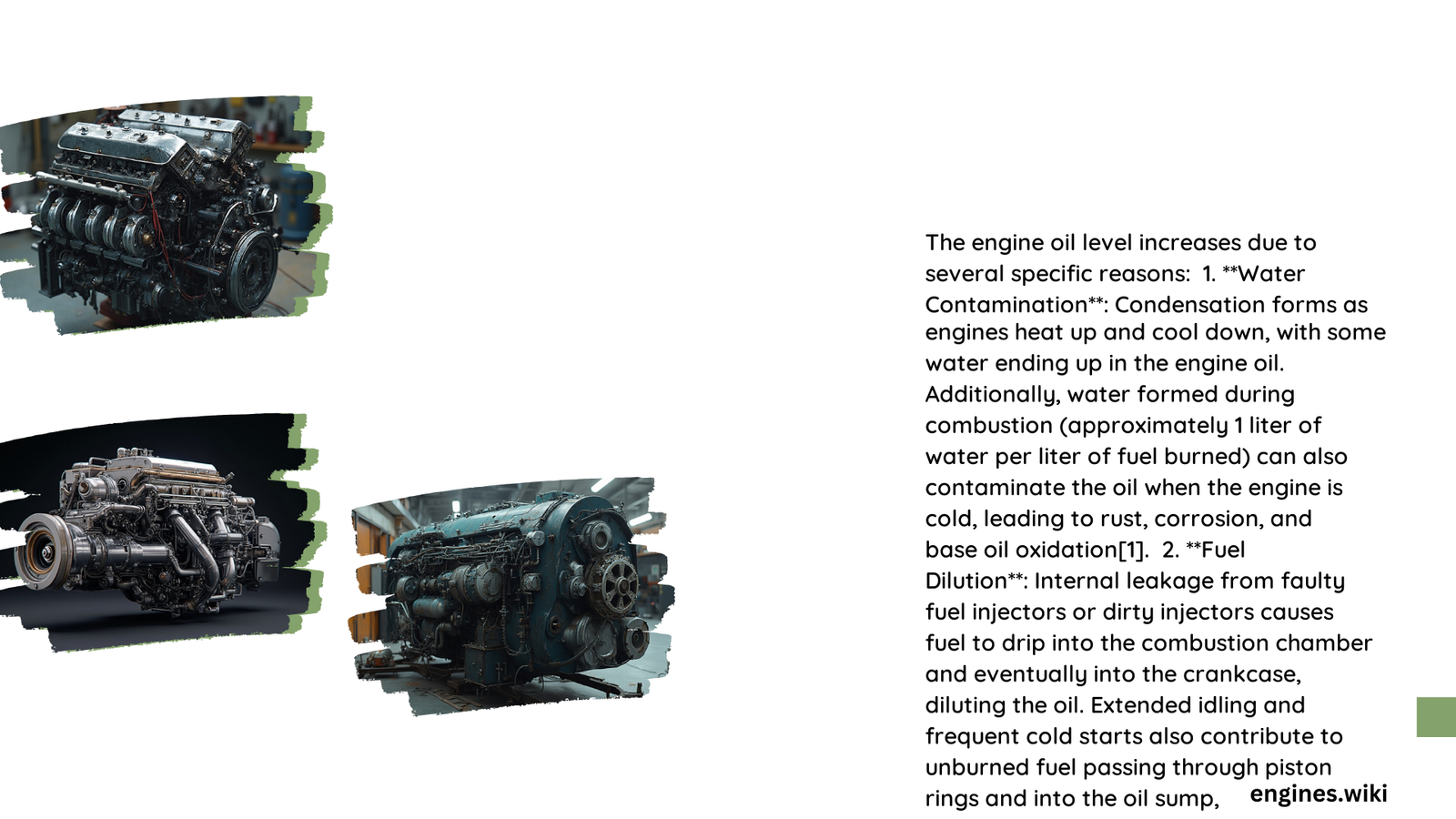Engine oil level increases can be a complex mechanical phenomenon resulting from multiple intricate processes within your vehicle’s engine system. When unexpected oil level rises occur, they often signal critical underlying issues that demand immediate professional attention. Water condensation, fuel contamination, coolant leakage, and internal mechanical failures can cause substantial changes in oil volume, potentially leading to significant engine damage if left unaddressed.
What Causes Unexpected Engine Oil Level Rise?
How Does Water Contamination Impact Oil Volume?
Water contamination represents a primary mechanism for engine oil level increase. During combustion, approximately one liter of water forms for every liter of fuel burned. This water can penetrate past piston rings, entering the oil sump and creating substantial volume changes.
Water Contamination Characteristics
- Source: Combustion process
- Quantity: Approximately 1 liter per liter of fuel
- Entry Point: Past piston rings
- Potential Consequences:
- Oil volume increase
- Reduced lubrication efficiency
- Potential corrosion risks
What Role Does Fuel Dilution Play?
Fuel dilution emerges as another critical factor in unexpected oil level increases. Multiple mechanical scenarios can introduce unburned fuel into the crankcase:
| Fuel Dilution Mechanism | Impact on Oil Level |
|---|---|
| Faulty Fuel Injectors | High potential for oil volume increase |
| Extended Idling | Moderate fuel contamination risk |
| Cold Start Frequency | Increased likelihood of dilution |
Fuel Contamination Indicators
- Gasoline-like odor in oil
- Reduced oil viscosity
- Milky or foamy oil appearance
How Can Coolant Leakage Affect Oil Volume?
Coolant leakage represents a severe mechanism for oil level increase. Even minimal glycol contamination (less than 1%) can create substantial mechanical complications.
Critical Coolant Leak Symptoms:
– Milkshake-like oil texture
– Sweet chemical odor
– Rapid oil volume expansion
– Potential head gasket failure
What Diagnostic Steps Reveal Oil Level Changes?
Comprehensive diagnostic approaches help identify root causes:
- Visual Oil Inspection
- Check oil color and consistency
- Observe dipstick readings
-
Note any unusual odors
-
Mechanical Pressure Testing
- Assess cylinder compression
- Evaluate fuel injection system
- Check coolant system integrity
What Are Potential Repair Strategies?
Addressing oil level increases requires systematic intervention:
- Immediate professional diagnostic assessment
- Potential component replacement
- Comprehensive system flush
- Regular maintenance monitoring
Technical Recommendations

Warning Thresholds:
– Oil consumption > 1 quart per 1,000 miles requires investigation
– Persistent level increases mandate professional evaluation
Preventive Maintenance Protocols
- Conduct regular oil analysis
- Monitor vehicle performance metrics
- Maintain consistent service schedules
- Use high-quality lubricants
Conclusion
Understanding why engine oil level increases demands technical expertise and systematic investigation. Each potential cause requires careful diagnostic approach to prevent long-term engine damage.
Risk Assessment Matrix
| Contamination Type | Severity | Immediate Action Required |
|---|---|---|
| Water Contamination | Moderate | Comprehensive oil change |
| Fuel Dilution | High | System diagnostic |
| Coolant Leakage | Critical | Immediate professional intervention |
References:
– SAE International Lubrication Standards
– Society of Automotive Engineers Technical Papers
– ASE Automotive Diagnostic Guidelines
